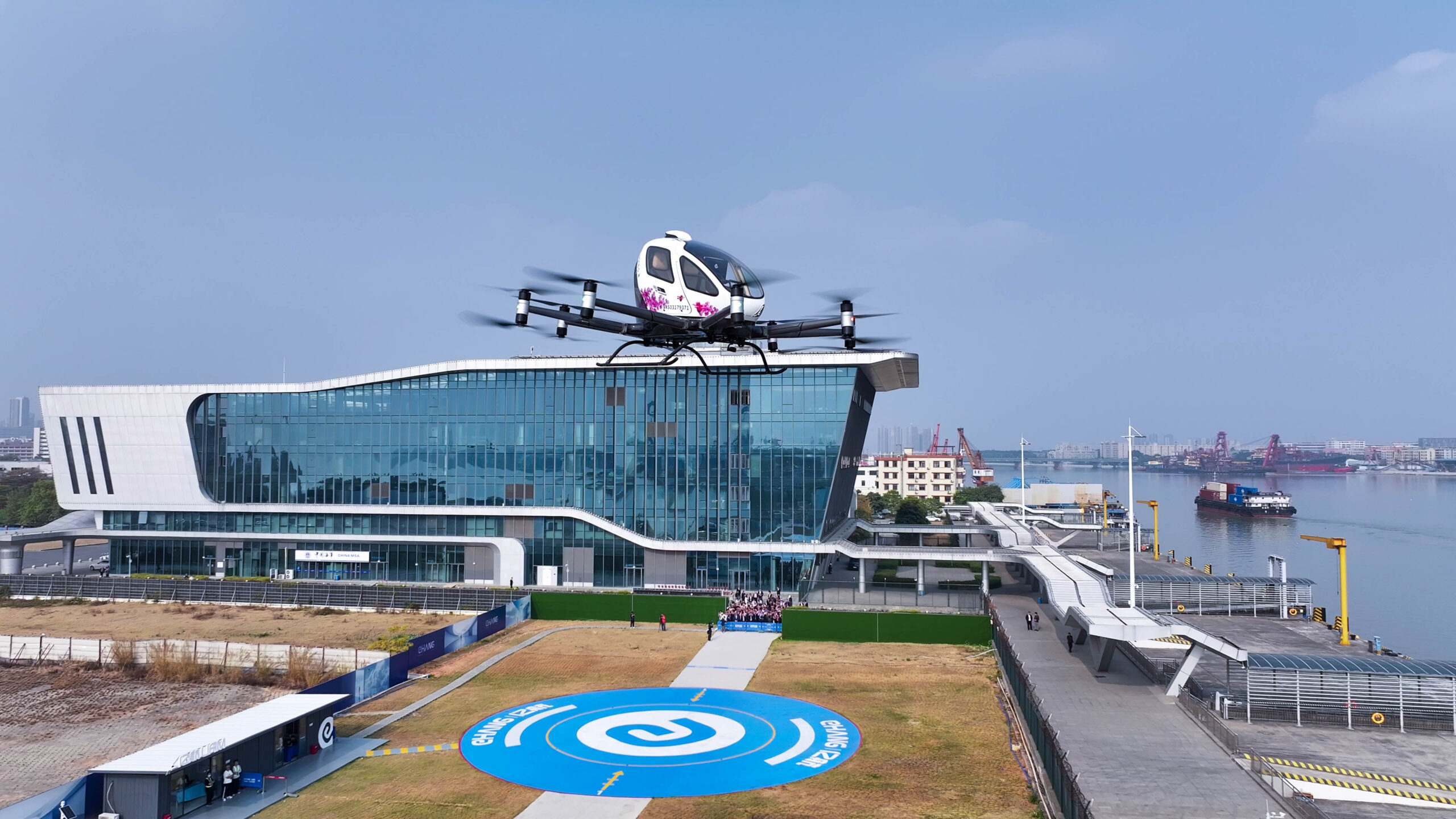Chinese Government Issues First Approvals for Autonomous Flying Taxis

For the first time, Chinese authorities have authorized two companies to operate self-flying passenger drones.
China has made a significant leap toward establishing a commercial flying taxi sector by issuing its inaugural approvals to two firms for operating autonomous passenger drones.
EHang Holdings, listed on Nasdaq, and Hefei Hey Airlines received air operator certificates from the Civil Aviation Administration of China (CAAC) on Saturday, as reported by the state-managed Xinhua news agency.
This approval allows both companies to deploy unmanned aerial vehicles for commercial passenger operations, such as urban sightseeing flights.
According to a Citic Securities report, the air operator certificate was the last regulatory step needed for the companies’ passenger drones to begin service, following their earlier acquisition of type, production, and airworthiness certificates.
“We reckon that low-altitude tourism will be the beginning of this new business,” the report noted. “EHang’s urban sightseeing tours can accelerate the development of the industry.”
In recent months, Beijing has implemented measures to boost the low-altitude economy, encompassing technologies like delivery drones, blimps, and flying cars.
Chinese leadership views this sector as a vital emerging industry and economic growth catalyst. In his address to the National People’s Congress in early March, Premier Li Qiang highlighted the low-altitude economy alongside biomanufacturing, quantum computing, embodied artificial intelligence, and 6G networks.
“The low-altitude economy is a new growth driver, and it will be an important engine to push the high-speed development of China’s economy,” Cheng Bolin, vice-president of the low-altitude unit at the China Information Association, stated at an industry conference on March 28.
A Hurun research report, citing CAAC data, forecasts that China’s low-altitude economy could reach 1.5 trillion yuan (US$207 billion) by the end of 2025, potentially doubling by 2035.
Prominent players in China’s market include innovative start-ups like EHang and Feihang Aviation, alongside established automakers such as Xpeng and Geely, competing with global giants like Boeing, Airbus, and Embraer.
“Looking ahead, as policies supporting the low-altitude economy continue to roll out, the competition in this sector is set to intensify,” Hurun stated in its report.
TGSN is your premier international newswire with unparalleled access to global news sources. TGSN delivers comprehensive coverage for a truly connected world. At TGSN we welcome freelance reporters, researchers and citizen journalists. For more information, read this page.
TGSN is reader-funded, support TGSN. See details:
SOL Address:
Ag7gcWyz53asFxnMrKg8LrZ4ZD2XzfNiUGnnBduJqJuz
ETH Address:
0xBf5182628c90FDAeAcbac3510172523d05b2C4Ff
BTC Address:
bc1qlldkq539v5ysye365av2md8wrxhshcr7kuql5w



